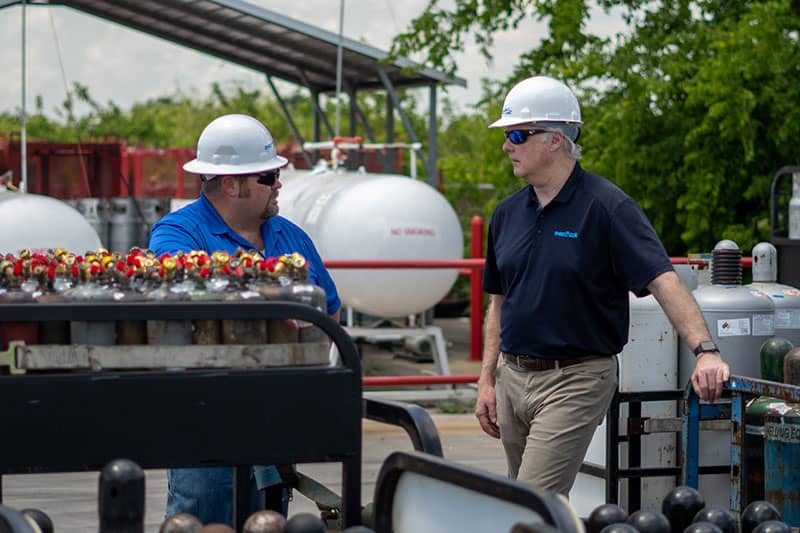Tools and Techniques Every Welder Needs to Forge Forward with nexAir
The difference between a decent weld and a great one often comes down to having the right tools and knowing how to use them. Welders who understand their equipment and the techniques that matter produce cleaner work, finish jobs faster, and spend less time on rework. Here’s what you need to know to take your welding to the next level.
Match Your Equipment to the Metal You’re Welding
Aluminum needs AC TIG capability and pure argon shielding. Stainless requires different filler metals and gas blends than mild steel. Thick structural work demands equipment that can sustain high heat without dropping performance. You can’t force one machine to handle every material and expect consistent results.
Different metals behave differently under the arc, and your equipment needs to accommodate that. Having the right machine for the job means better penetration, cleaner beads, and fewer headaches trying to make substandard equipment produce quality welds. If you’re working with multiple materials regularly, you need equipment that can switch between them without compromising results.
Know Your Shielding Gases
The gas flowing over your weld pool controls how the arc behaves, how deep the weld penetrates, and what the finished bead looks like. Straight CO2 is cheap but creates spatter everywhere and leaves rough surfaces. Pure argon works perfectly on aluminum but won’t penetrate steel deep enough. Mixed gases give you advantages of both, but only if you’re using the right blend.
A 75/25 argon-CO2 mix handles most mild steel applications. Stainless often needs tri-mix blends with helium to reduce oxidation and improve appearance. Heavy plate benefits from higher CO2 content for deeper penetration. Knowing which gas to use for which application eliminates the guesswork that leads to failed welds and wasted material.
Replace Consumables Before They Fail
Tips, nozzles, and liners wear out faster than most welders realize. A worn contact tip creates an unstable arc that makes every weld harder than it should be. A spatter-clogged nozzle restricts gas flow and leaves your weld unprotected. A contaminated liner causes wire feeding problems that seem random but have a clear cause.
Fresh consumables cost almost nothing compared to the rework they prevent. Change your contact tips regularly to keep the arc stable. Clean or replace nozzles when spatter builds up. Swap liners before they start causing wire feed issues. These small maintenance habits eliminate problems before they ruin your work.
Preparation Determines Your Results
Most weld failures happen before you ever strike an arc. Contaminated base metal, poor joint fit-up, and inadequate cleaning create problems that perfect technique can’t fix. Oil, rust, and mill scale prevent proper fusion and introduce defects. Gaps that are too wide require excessive filler metal and increase cracking risk. Wrong edge preparation prevents full penetration on thick joints.
Clean your base metal thoroughly every time. Grind joints to the correct bevel angle for the material thickness. Make sure fit-up is tight and consistent along the entire joint. These preparation steps take extra time upfront but save hours of rework later. Welds that pass inspection the first time start with proper preparation, not luck.
Keep Your Workspace Set Up Right
Your torch angle, work height, and body position affect weld quality more than most welders admit. Fighting an awkward position leads to inconsistent travel speed and poor bead appearance. Standing too high or too low creates fatigue that shows up in your work. Poor lighting makes it impossible to see the puddle clearly enough to make adjustments.
Set up your workspace so you can maintain consistent position throughout the weld. Adjust work height so you’re not hunched over or reaching. Position yourself so you can see the puddle without craning your neck. Use proper lighting that shows you what’s happening in the weld pool. These setup details seem minor but they directly impact the quality of every weld you lay down.
Quality welding requires the right tools and solid technique. nexAir provides the equipment and gases that let you Forge Forward with consistent results, backed by our expert KnowHow™ from supplying welders across every industry. Contact nexAir to make sure you have what you need to produce your best work.
Looking out for your future
Get your career going on the right track with nexAir
Find out how nexAir KnowHow has impacted businesses all over the Southeast
Our expertise makes us more than a valuable partner, it makes us headlines
Don't see what you're looking for?
Everything we offer is a click away and it will arrive before you know it.


